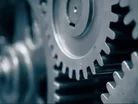Could automation be the key to job creation in manufacturing?

The march of automation is inevitable—the technology is here and improving rapidly, and is already becoming an indispensible part of the manufacturing industry. But where does that leave the human workforce? A common concern is that the rise of automation will deepen issues of unemployment and income inequality. But one new study counters that concern, positing that the growth of automation in the United States could in fact create jobs as it revitalizes the manufacturing industry.
RELATED CONTENT: The robot revolution
The Association for Advancing Automation (A3) produced a white paper titled “Robots Fuel the Next Wave of U.S. Productivity and Job Growth,” which argues—as the title suggests—that increased automation could actually be a vital key to bringing manufacturing back to the United States en masse, increasing its status as a manufacturing competitor and ultimately preserving (and even increasing) the amount of enjoyable high quality jobs within the sector. The paper backs this position up with a combination of data from the Bureau of Labor and statistics from manufacturers over the years.
RELATED CONTENT: Where next for the automation revolution?
Jeff Burnstein, president of A3, recently discussed this white paper with ZDNet including the nuances of what they data they have collected means:
Burnstein also delves into the subject of automation versus offshoring and outsourcing in a competitive world, shedding light on the tough decisions that must occur to make the best choices for a business and an industry:
Will the world of manufacturing look very different in the near future, with human workers performing more high-level STEM-based work while machines do the assembling, packing, and heavy lifting? More importantly, can this transition help secure a stronger future for manufacturing in the United States? Check out the full interview and white paper to read on and consider the choices at hand.
- An Overview of Kamala & Trump's Plans for US ManufacturingProduction & Operations
- The US Could Soon Lead In Silicon Carbide ManufacturingTechnology
- HSBC: Behind UK Manufacturers Optimism on US ManufacturingProduction & Operations
- US Battery Manufacturing Boost Helps Industry & CommunityProduction & Operations

